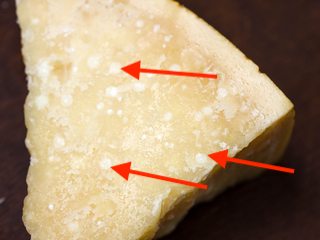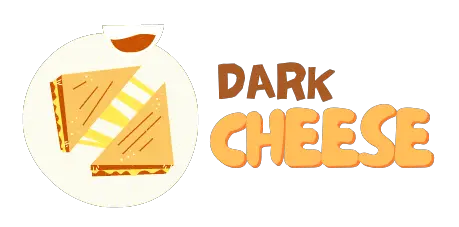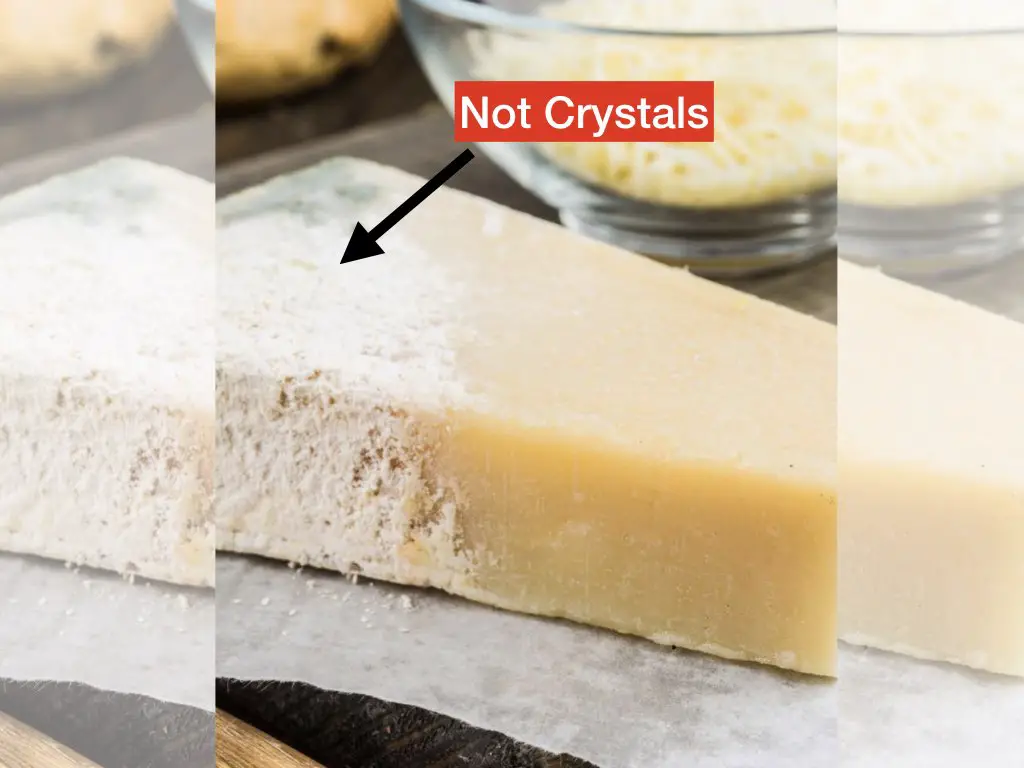Last Updated on November 5, 2022 by Aaron
Parmigiano Reggiano (aka parmesan) is known for its long aging process which may take up to 3 years to age.
The minimum duration of which can be sold at the store is to have at least 3 months (or 12 months for some parmesan brands) of maturation. That’s for the probiotic bacteria and enzymatic reaction to kick in in order to produce the unique Parmesan umami/savory taste and smell.
The longer the maturation, the stronger the taste, and therefore higher in price.
I discussed in detail the bacteria responsible for parmesan.
While the maturation of the cheese can take up to years, it’s normal to see white spots appear on the parmesan. Like many other hard cheeses (including asiago and gouda), the white spots also called “pearls” are the crystallization of amino acid protein (1), which in particular, tyrosine and leucine. They could also be calcium lactate crystals (2).
One good way to tell apart crystals from the mold is that mold will almost certainly just grow on the outside (surface of cheese), while cheese crystals can be found on the inside of the cheese.
Crystals are a sign of well-aged parmesan cheese.
This is likely noticeable for parmesan over 2 years of age, such as this one you can buy some via Amazon.

The parmesan with white crystals is safe to consume.
Sometimes it can be confusing. Therefore, if you don’t find them appetizing or are not sure they are mold, you can always trim or cut off at least 1 inch below the spot.
Read the differences between Cheese crystals vs Molds.
The lactic acid bacteria involved in cheese ripening break down the lactose into lactic acid. Lactic acid binds with calcium to form calcium lactate.
Will you get sick from eating spoiled parmesan? Read more in Can Parmesan Go Bad?
White mold – Should I throw them away?
In some cases, the white spots are not crystals but mold. It could be a combination of bacteria and fungi, such as E. coli, Scopulariopsis, and Salmonella. So when it comes to food safety, it’s better not to push your luck.
See the topmost featured image above. The cheese is covered in white stuff. Do you feel safe to eat it?
Do not be confused with frozen parmesan cheese. It’s the result of cheese getting contaminated, forgotten in the fridge, or left out at room temperature. The mold slowly took over the cheese in days, or sometimes even hours.
After all, cheese is a perishable food. Cheesemaking is a process to invites only a certain group of bacteria to grow. The uninvited ones are inhibited either naturally or with humans involved such as using salt, temperature, etc. The bacteria then produced desirable aromas, flavors, and textures.
Where are these nasty things from?
Imagine there are 1500 active bacteria now crawling happily in each square centimeter of skin on your hand, and potentially viruses too. You’ll know we humans have no problem inviting them.
Likewise in cheesemaking, we make use of a favorable environment to outnumber certain good bacteria so the chances of you getting sick after eating it becomes very low. In fact, throughout the production process, the different types of bacteria populations fight over each other for this piece of tasty cheese.
Under the microscope, you will see some bacteria are found more actively in the early curdling stage, while some others are doing better in the later aging stage.
By using salt or brined water in a nicely warmed environment, the predominant thermophilic lactobacillus bacteria grow quickly. They synthesized compounds as weapons to resist the growth of another type of bacteria. Apparently, there is a winner in the war — and the result is favorable to all of us cheese lovers.
Mold can have many forms or patterns. Some may look like patches of black stains, or fuzzy white specks, or just look like bread mold. It can be in various colors too.
If you accidentally eat a mold-infected parmesan, depending on the type (some produce toxins), you can get very sick from that. The golden rule is not to eat it if you are not sure.
There you have it, the white spots are likely to be crystals most of the time.
Thanks for reading!

